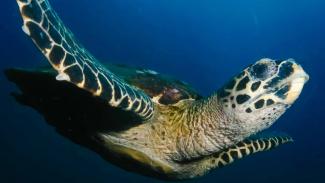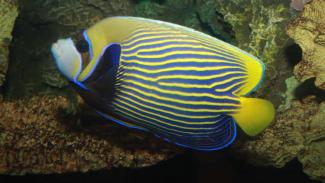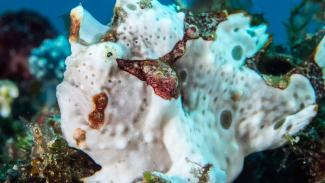Be a fish detective!

Christian Gloor
For many divers the thrill of spotting and identifying a new fish is one of the reasons they love to dive.
But identifying a new fish is never that easy, especially considering the sheer abundance of different species that make their home in Asia's incredible reefs.
So we've put together some tips to help you to improve your identification skills and get more out of your diving.

Top identification tips
Get familiar with the common reef fish families (or just your favourites) and find out about their appearance and behaviour. Underwater Asia's Reefspotter pages are a great place to start. With a bit of knowledge it’s easy to correctly identify most fishes families and it is much easier to ID a fish if you know which family it is from.
- Carry a slate underwater and make a quick drawing of the fish when you see it. Don’t worry about artistic perfection - just make a quick note of the shape, fins, markings and colouration of the fish.
- Don’t just look at the fishes' appearance, note it’s behavoiour as well. What the fish is doing can be just as helpful as what it looks like when you are trying to identify it. Is it on the bottom or hovering above the reef? Is it on its own or in a group? How does it swim and which fins does it use?
- The slate below gives you an idea of what to look out for to help you identify a fish more easily.
- Try and look for your fish in a fish book as soon after the dive as possible. Memories fade fast, especially when confronted with a page of 10 very similar looking reef fish.
- Don't place too much importance on common names. If you look a fish up in two different books, the chances are it will have different names, so if you want to compare between books - use the latin name instead.

Nick Hobgood

Platyax Tiera
You might also enjoy...
Bohol
The island of Bohol lies just to the east of Cebu in the Viasayas region of the Philippines and is a popular island for tourists.
The area's diving is also a major attraction, with great macro life, plentiful turtles and lovely coral reefs. Good diving options are available on the west coast, and also the quieter south-east region of Anda.
Getting technical
Christian Gloor
Have you ever found yourself diving on a reef wall and wondering what lurks in the depths below? Or longed to spend more than a few fleeting moments exploring a mysterious & historic shipwreck?
Then maybe technical diving is the sport for you. Increasing numbers of divers, eager to explore beyond the bounds of recreational limits, are taking an interest in technical diving.
Langkawi
Situated on the west coast of Peninsular Malaysia, close to the Thai border, is the island of Langkawi.
The island is one of Malaysia’s most popular tourist spots, with great beaches, beautiful scenery, great shopping and plenty to do.
Get Involved
Brian Yurastis







